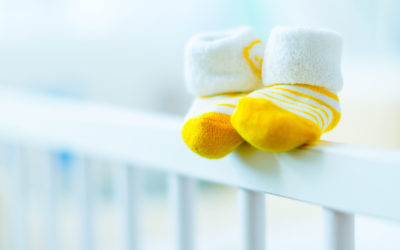Hi, I'm Ashley. And I'm Rachel. Welcome to our series, CapitalMOM Real Life Conversations. This week, we're going to be talking about bedtime routines—how they're different for every family, but ultimately how we use this time to connect with our children in different...
Sleep
A Parent’s Guide to Infant, Baby & Toddler Sleep
Sleep—the one thing new parents are always deprived of themselves. But what about our little ones? How can we keep them safe and ensure they are getting enough sleep in the optimal environment? It starts when you bring your baby home. What to Expect After Bringing...
What Can I Do to Improve My Sleep?
Do any of these scenarios sound familiar? It’s Sunday afternoon and while sitting in my recliner watching television, I end up taking a nap over two hours. Why am I not able to fall asleep at my normal bedtime hour? I had to work late and ended up eating later than...
And We’re Back to Co-Sleeping
About a year ago, I wrote about transitioning my daughter into a “big girl bed.” At the end of the post, I wrote that she now sleeps in her bed in her own room by herself. Well…not anymore!
It’s Time to Transition to a Big Girl Bed
One day after my two-year-old daughter Collyns was “napping,” I found her in her hamper next to her crib. I realized it was time to transition her crib into a toddler bed.
How to Survive All-Nighters as a Mother
After finishing school, you think the all-nighters are over. But then you become a parent and realize staying up with a screaming child is a little different than staying up all night studying or staying out late at a party.
The Importance of Getting a Good Night’s Sleep
The actual number of hours of sleep we need varies from person-to-person and by age, but the overall average is between 7.5 to 8 hours of sleep. Getting enough sleep is important in maintaining a healthy body and mind.
Bedside Sleeper vs. the Crib
Every parent has heard the stories of losing sleep and becoming a zombie for the first year of a child’s life. Well, my first year with Cohen was no different with endless, sleepless nights! From the moment he was born, the only way he would sleep was in someone’s arms.
Back to School Sleep: Get Into a Routine
Summer fun usually means staying up later and waking up later. Now that school is about to start, it is time to start thinking about early start times, homework, and other activities.
Use Our Symptom Checker
Whether it’s a rash, your child’s ear pain or your aching back, our symptom checker can help determine what to do. Just answer a few questions about your symptoms and receive recommendations for care.
Find a Doctor
Find the right provider for you. Search by specialty, view provider videos and even schedule an appointment online. Life’s busy, we make finding a provider fast and easy to fit your schedule.
Stay Informed for Your Health
You and your family are unique. At Bryan Health, we have a variety of classes, events, podcasts and more for all stages of life.
To stay in the know, subscribe to our monthly For Your Health email!
Tune in to…Bryan Health Podcasts
Our 10-minute podcasts provide practical, useful advice for a lifetime of good health.
And they’re easy to listen to while you’re on the go, at work or at home. Listen to or download a free podcast today!
Register for the Bryan Baby App
Access pregnancy, childbirth and newborn care resources anytime, anywhere.
The Bryan Baby App includes the tools and support you need at every stage of your pregnancy journey and beyond.










